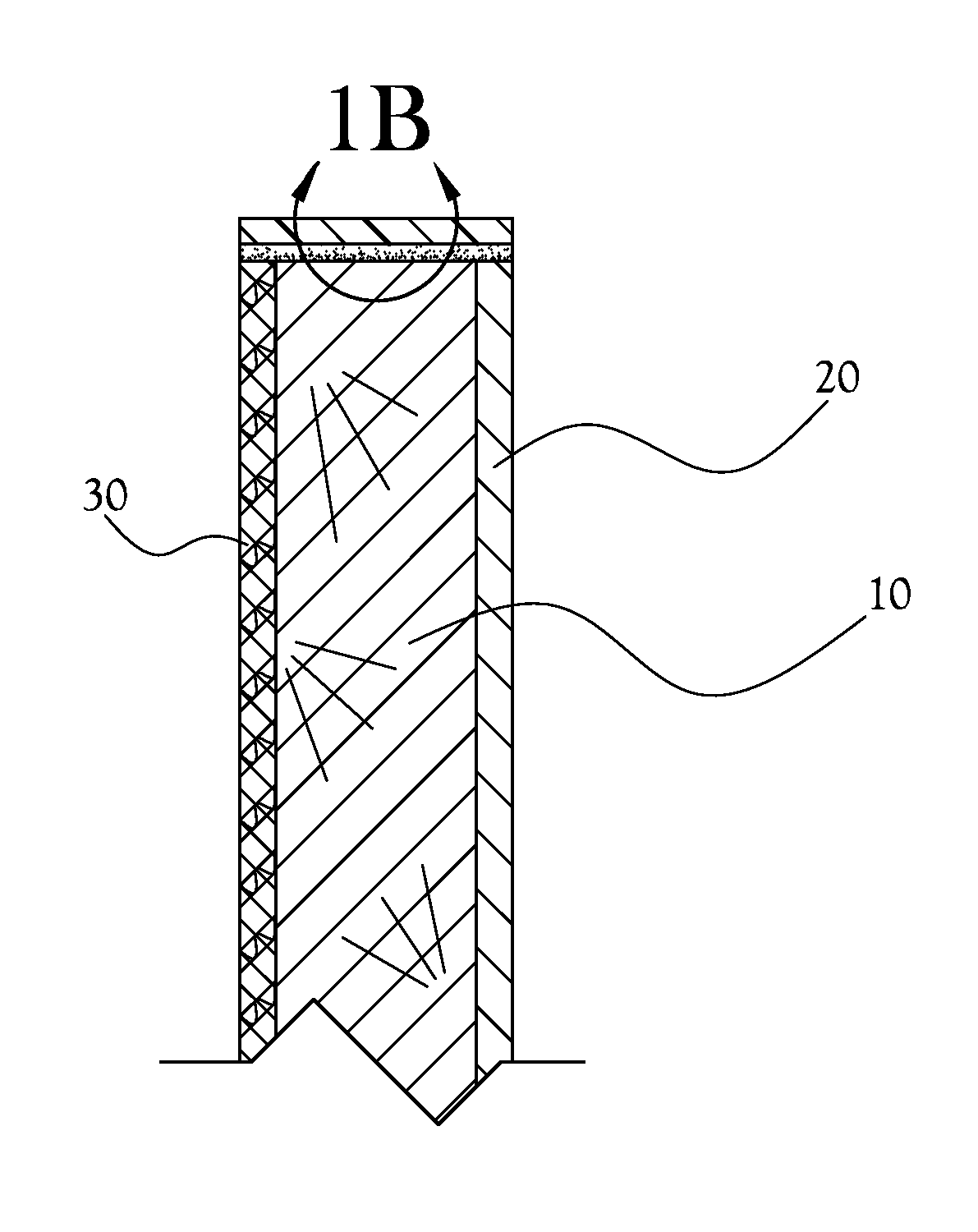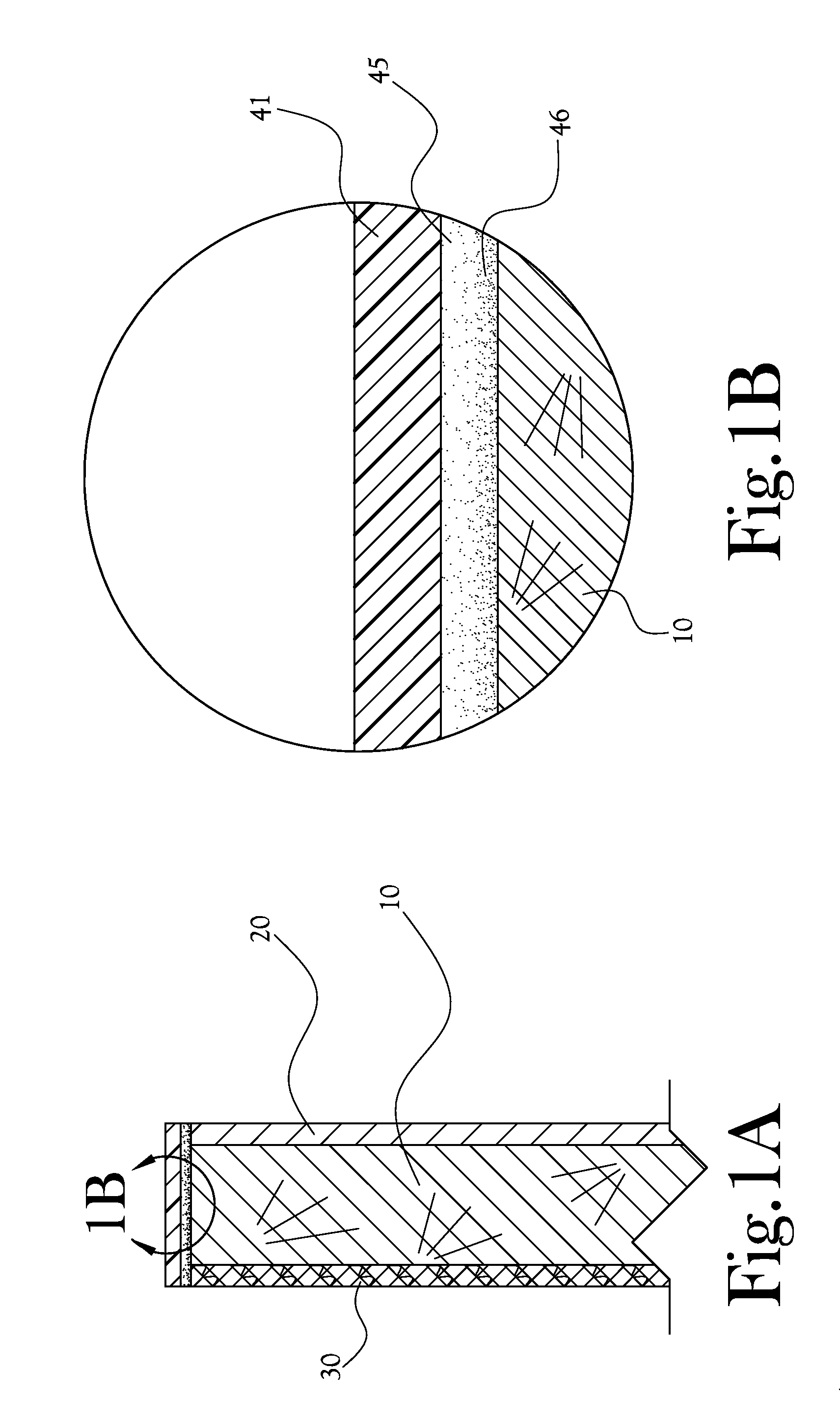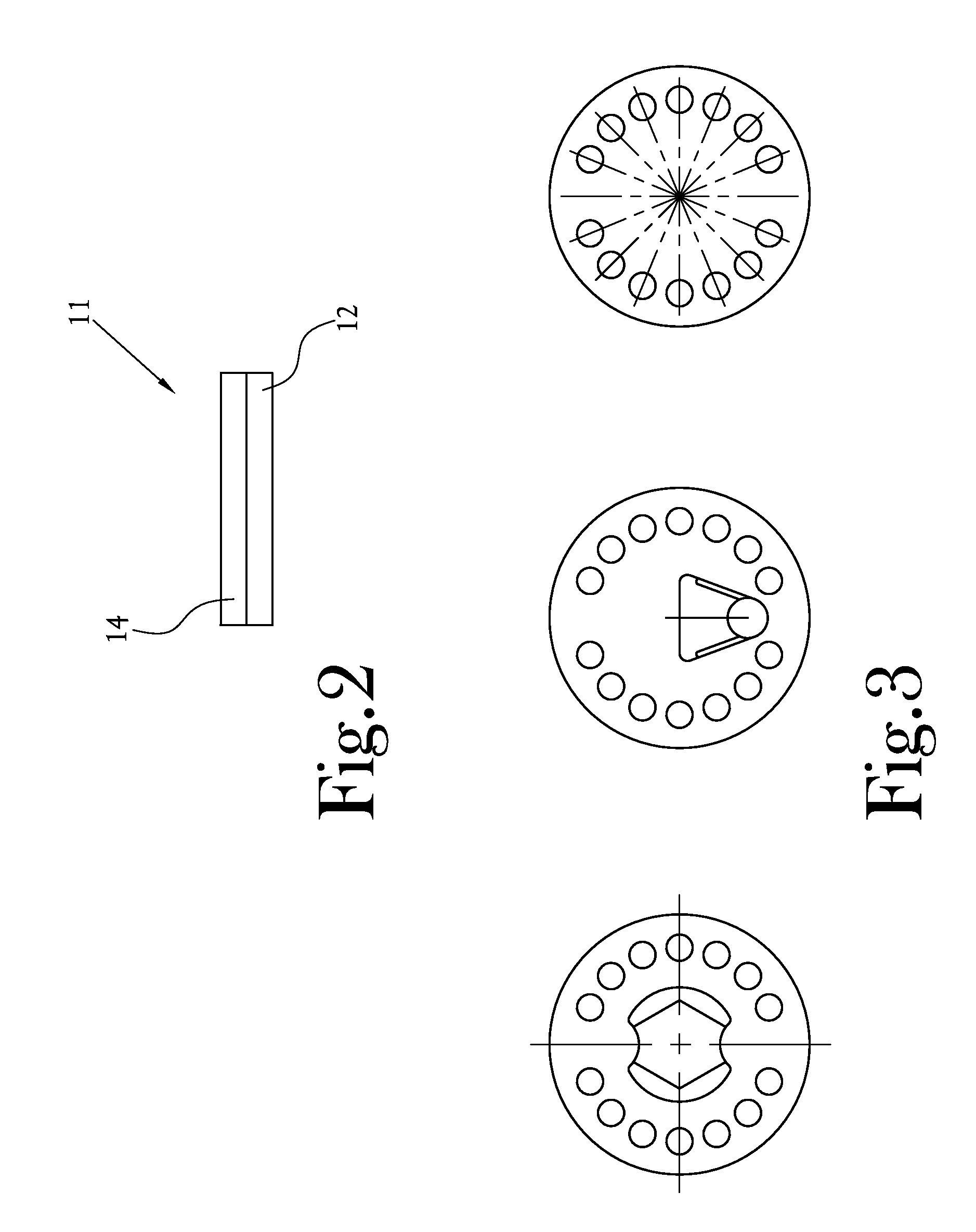Primerless Edge Banding
a technology of edge banding and primer, which is applied in the direction of film/foil adhesives, furniture parts, and layered products of plastic cells, can solve the problems of primers having a shelf-life of a few years at most, and the shelf-life of primerless edge banding materials is considerably longer
- Summary
- Abstract
- Description
- Claims
- Application Information
AI Technical Summary
Benefits of technology
Problems solved by technology
Method used
Image
Examples
example embodiment
[0038]An edge banding comprising an exposed outer layer of a thermoplastic selected from the group consisting of PP, ABS and PVC is coextruded with an under layer of EVA thermally bonded to the exposed outer layer is disclosed.
[0039]FIG. 2 illustrates a simplified schematic of one embodiment of edge banding 11 in accordance with the present invention. The edge banding 11 comprises an exposed outer layer 12, which is decorative and abrasion resistant, and an under layer 14 adapted for adhesive attachment to an edge of a board.
[0040]In one embodiment, the under layer 14 is approximately between 0.002 inches and 0.015 inches thick and comprises between 18% and 26% EVA. One source of suitable EVA is sold by Lyondell Chemical Company under the name ULTRATHENE® UE624000.
[0041]The outer layer 12 is about 0.020 to 0.120 inches in thickness and comprises polypropylene. A suitable source for polypropylene is sold by Formosa Plastic Company under the name FORMOLENE® 7320B. The two layers 12 an...
PUM
| Property | Measurement | Unit |
|---|---|---|
| Fraction | aaaaa | aaaaa |
| Fraction | aaaaa | aaaaa |
Abstract
Description
Claims
Application Information
 Login to View More
Login to View More - R&D
- Intellectual Property
- Life Sciences
- Materials
- Tech Scout
- Unparalleled Data Quality
- Higher Quality Content
- 60% Fewer Hallucinations
Browse by: Latest US Patents, China's latest patents, Technical Efficacy Thesaurus, Application Domain, Technology Topic, Popular Technical Reports.
© 2025 PatSnap. All rights reserved.Legal|Privacy policy|Modern Slavery Act Transparency Statement|Sitemap|About US| Contact US: help@patsnap.com



